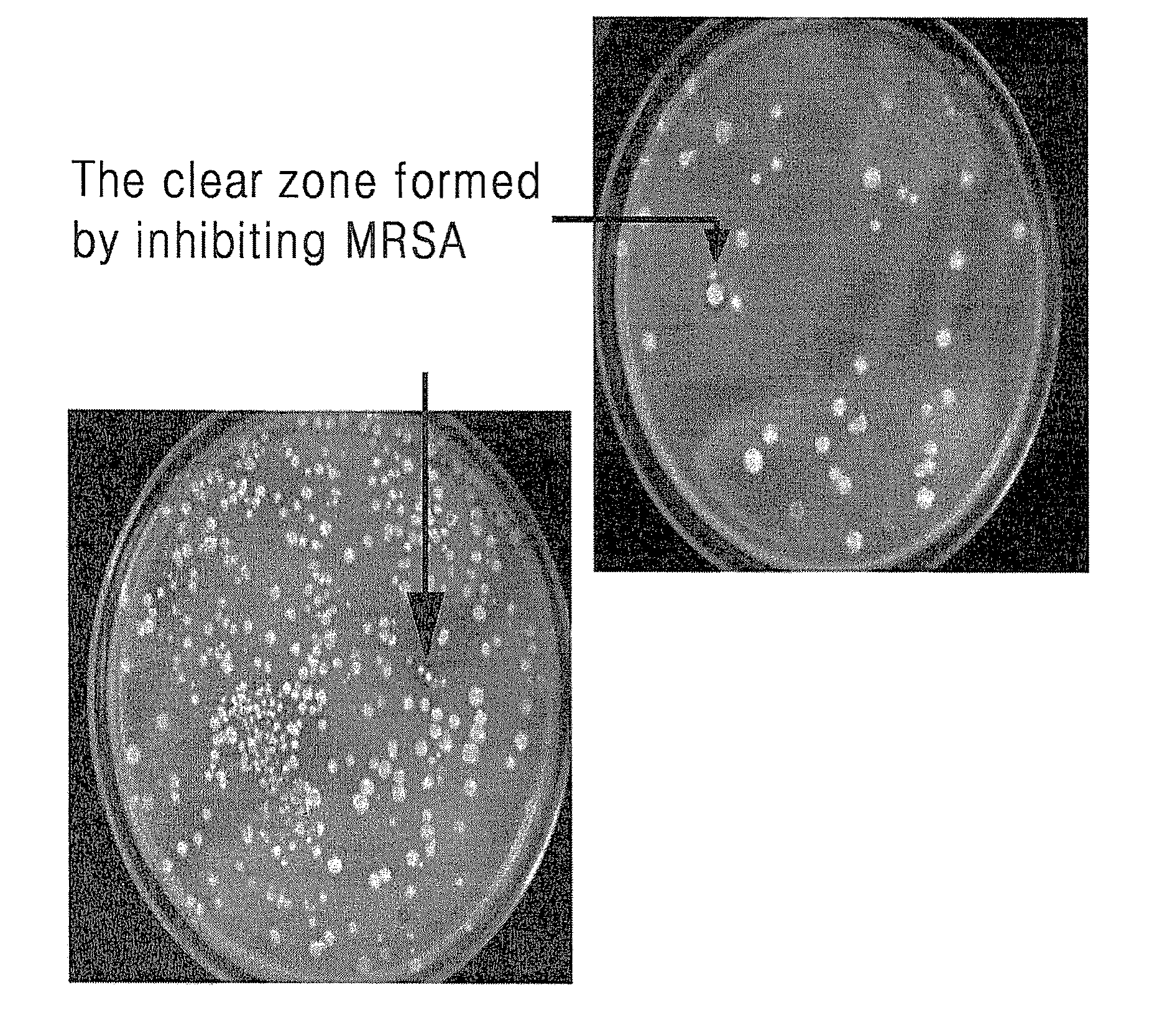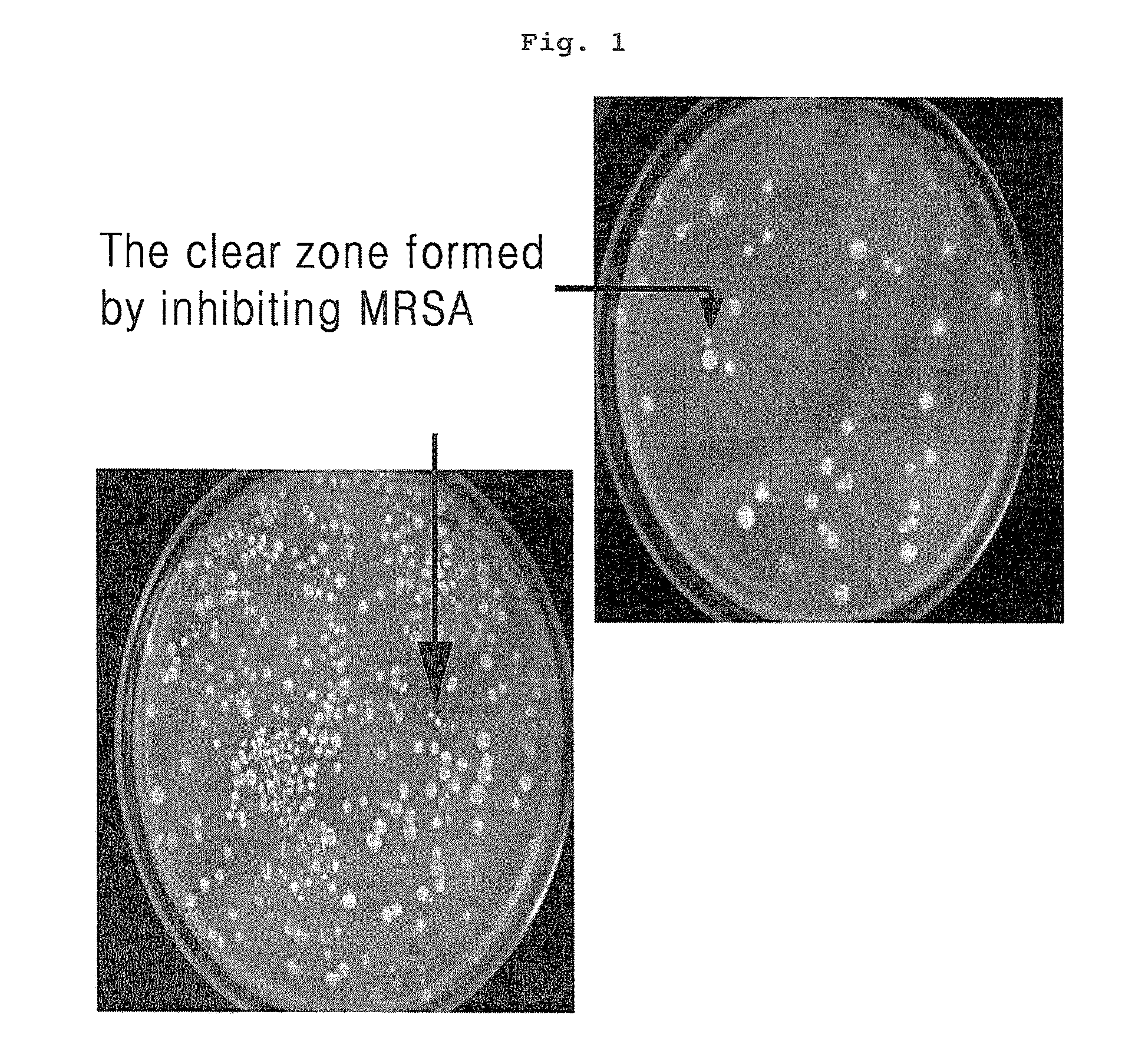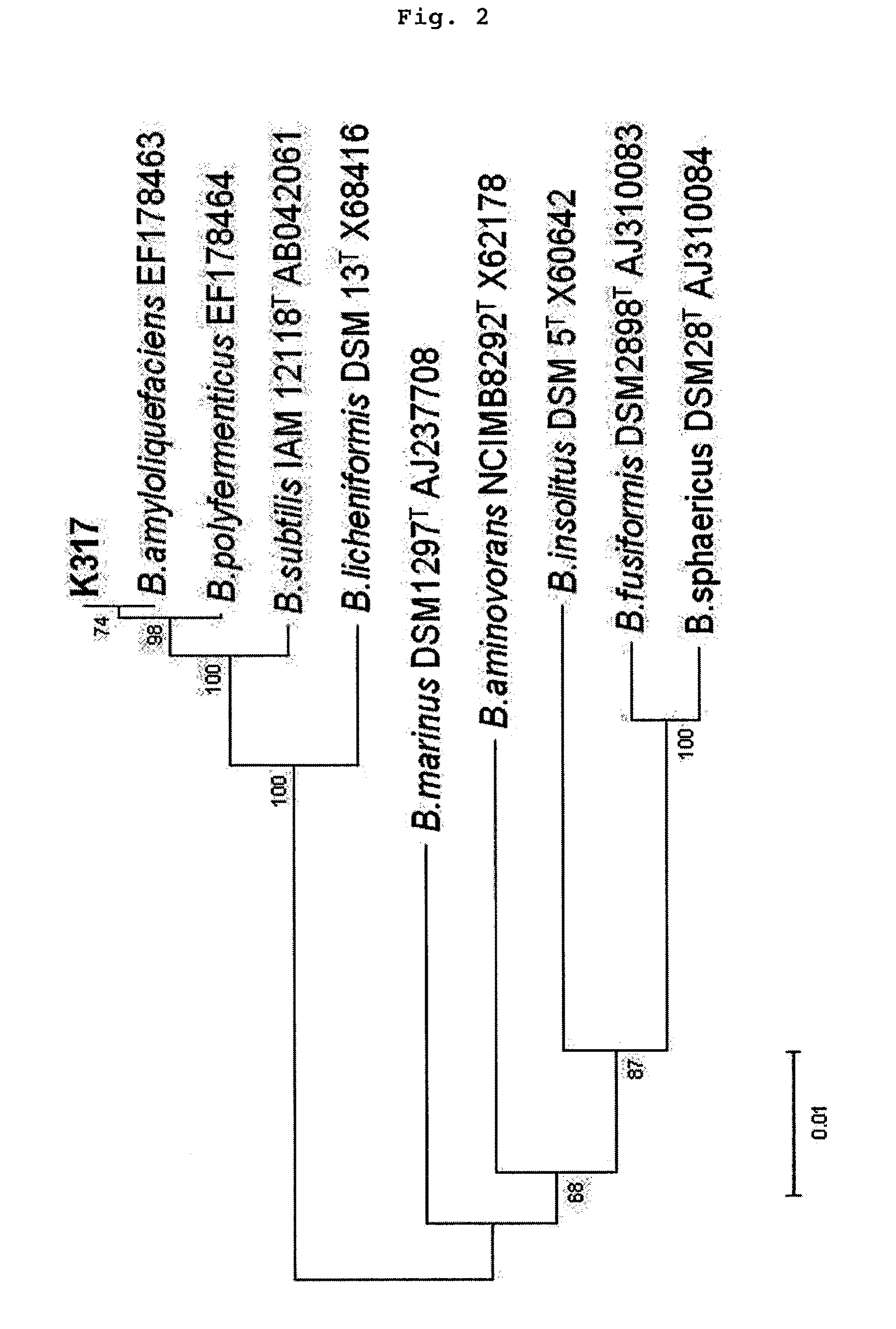Bacillus amyloliquefaciens K317 for suppressing the growth of antibiotics-resistant pathogenic microorganism or enteropathogenic microorganism
a technology of enteropathogenic microorganisms and amyloliquefaciens, which is applied in the field of k317 strain suppressing the growth of antibiotics-resistant pathogenic microorganisms or enteropathogenic microorganisms, can solve the problems of antibiotic resistance strains, difficult to be defined precisely, and reckless antibiotic overus
- Summary
- Abstract
- Description
- Claims
- Application Information
AI Technical Summary
Benefits of technology
Problems solved by technology
Method used
Image
Examples
example 1
Separation of the Microorganism having Antibacterial Activity
[0062]To separate the microorganism having antibacterial activity against MRSA (methicillin-resistant Staphylococuus aureus), the antibiotics-resistant pathogenic microorganism, Kimchi juice properly diluted was smeared on the tryptic soy agar (TSA, Difco) medium pre-smeared with MRSA, followed by culture at 37° C. for 48 hours. Upon completion of the culture, tens of colonies exhibiting clear zone were selected (FIG. 1). The Kimchi was prepared as follows; cleaned Chinese cabbage, cut it into two equal pieces crosswise, soaked them in approximately 7% (w / w) salt water, salted down at room temperature (approximately 25° C.) for 14 hours, washed the salted cabbages with tap water three times, and dehydrated them for 2 hours; and radish (cut into 4×4 cm), green onion and other ingredients were added to the prepared cabbages. The other ingredients were those: salted fish prepared by mixing pickled oysters, salted anchovies, s...
example 2
Identification of the Separated K317 Strain
[0063]The K317 strain finally selected in Example 1 was identified by morphological classification method and the newest molecular systematic method. The K317 strain was grown best when it was cultured on TSA (Tryptic Soy Agar, Difco) medium at 30-37° C. Its morphological characteristics were investigated by Gram staining, and as a result, the strain was confirmed to be a Gram positive bacillus. The strain was finally identified as Bacillus amyloliquefaciens by 16S rRNA nucleotide sequencing. The nucleotide sequencing and analysis were as follows. To extract DNA, the cultured cells were resuspended in 100 μl of STES buffer (0.4 M NaCl, 0.2 M Tris-HCl (pH 7.6), 0.01 M EDTA, 1% SDS). Glass beads were added to the sample, followed by lysis for 5 minutes with TOMY (micro tube mixer MT-360) to elute cytoplasm. The eluent was suspended in 200 μl of TE buffer (pH 8.0) and 200 μl of phenol / chloroform, followed by centrifugation. 5 μl of RNase A was...
example 3
Inhibiting Capacity of Bacillus amyloliquefaciens K317 on the Growth of Pathogenic Microorganisms
[0066]To investigate the inhibiting activity of the K317 strain identified in Example 2 on the growth of pathogenic microorganisms, following experiment was performed. The K317 strain was cultured on TSA medium at 37° C. for 24 hours. Enteropathogenic microorganisms herein were Salmonella typhimurium, Edwardsiella tarda, E. coli and Staphylococcus epidermidis distributed from Korean Collection for Type Cultures (KCTC), Korea Research Institute of Bioscience and Biotechnology (KRIBB). And 30 strains of MRSA distributed from Culture Collection of Antimicrobial Resistant Microbes, Seoul Women's University, Seoul, Korea, were used as antibiotics-resistant bacteria. For the pathogenic bacteria growth inhibition test, the strains were cultured on Mueller Hinton media (MH, Difco, USA) at 37° C. for 48 hours. Then, the formation of clear zone was observed. The present inventors smeared live path...
PUM
| Property | Measurement | Unit |
|---|---|---|
| molecular weight | aaaaa | aaaaa |
| temperature | aaaaa | aaaaa |
| pH | aaaaa | aaaaa |
Abstract
Description
Claims
Application Information
 Login to View More
Login to View More - R&D
- Intellectual Property
- Life Sciences
- Materials
- Tech Scout
- Unparalleled Data Quality
- Higher Quality Content
- 60% Fewer Hallucinations
Browse by: Latest US Patents, China's latest patents, Technical Efficacy Thesaurus, Application Domain, Technology Topic, Popular Technical Reports.
© 2025 PatSnap. All rights reserved.Legal|Privacy policy|Modern Slavery Act Transparency Statement|Sitemap|About US| Contact US: help@patsnap.com



